Fairey Barracuda: The troubled torpedo bomber ...
Sun Jul 02, 2023 8:36 pm
"Few aircraft draw as much derision as the Fairey Barracuda. It was built to be "all things to all people" - a torpedo bomber that was also a competent dive bomber and reconnaissance platform.
But its development was troubled from the start.
It was originally intended to be the recipient of a new generation of Rolls Royce engines specifically built for Fleet Air Arm needs - the four-cylinder-bank "Exe" (Boreas). But this was cancelled as part of the war emergency program to focus efforts on fewer projects.
It was then supposed to get the Rolls Royce Griffon engine - the successor to the Merlin. But the Royal Air Force over-ruled the Royal Navy in the priority lists.
So the Barracuda was left desperately underpowered.
And that was before fatal problems began to emerge with its structural rivets and main spar joints" ...
This series of photographs of Barracudas were taken at RNAS Rattray during August 1945 and show aircraft of 825 Squadron. The photos are also part of the Canadian Department of National Defense Archive. The images showing maintenance were clearly staged for the benefit of the photographer.
Canadian DND Archive.

Barracuda II coded ‘F’ undergoing maintenance to its engine. On top of the engine is AM/E Marlin Field, on the ladder is AM/A George Lord and on the ground is AM/A William Beattie.

Barracuda II coded ‘F’ named ‘Bomburger’. Two ratings, AM/O Orel Murdock and AM/O Elmer Rutledge are loading 12lb smoke bombs to the Light Series Bomb Carrier whilst under the supervision of Petty Officer Allan McKenzie.

Barracuda II coded ‘F’ named ‘Bomburger’. Petty Officer Neville Barrett is squatting by the port main wheel, P/O TAG3 William Gow is stood on the port main undercarriage torsion box and in the cockpit is the pilot S/Lt Duncan Lang RNVR.

Barracuda II MX852 coded ‘B’ being towed by a tractor with its mainplane trailing edges in the folded position during August 1945. A second Barracuda is taxiing behind, a third behind that and a fourth on the other side of the airfield. Note that the first two aircraft have Anti-Submarine Homing radar pods attached below their starboard mainplanes.

Barracuda II coded ‘G’ with an ASH radar pod attached under its starboard mainplane being manhandled onto a taxiway.

But its development was troubled from the start.
It was originally intended to be the recipient of a new generation of Rolls Royce engines specifically built for Fleet Air Arm needs - the four-cylinder-bank "Exe" (Boreas). But this was cancelled as part of the war emergency program to focus efforts on fewer projects.
It was then supposed to get the Rolls Royce Griffon engine - the successor to the Merlin. But the Royal Air Force over-ruled the Royal Navy in the priority lists.
So the Barracuda was left desperately underpowered.
And that was before fatal problems began to emerge with its structural rivets and main spar joints" ...
This series of photographs of Barracudas were taken at RNAS Rattray during August 1945 and show aircraft of 825 Squadron. The photos are also part of the Canadian Department of National Defense Archive. The images showing maintenance were clearly staged for the benefit of the photographer.
Canadian DND Archive.

Barracuda II coded ‘F’ undergoing maintenance to its engine. On top of the engine is AM/E Marlin Field, on the ladder is AM/A George Lord and on the ground is AM/A William Beattie.

Barracuda II coded ‘F’ named ‘Bomburger’. Two ratings, AM/O Orel Murdock and AM/O Elmer Rutledge are loading 12lb smoke bombs to the Light Series Bomb Carrier whilst under the supervision of Petty Officer Allan McKenzie.

Barracuda II coded ‘F’ named ‘Bomburger’. Petty Officer Neville Barrett is squatting by the port main wheel, P/O TAG3 William Gow is stood on the port main undercarriage torsion box and in the cockpit is the pilot S/Lt Duncan Lang RNVR.

Barracuda II MX852 coded ‘B’ being towed by a tractor with its mainplane trailing edges in the folded position during August 1945. A second Barracuda is taxiing behind, a third behind that and a fourth on the other side of the airfield. Note that the first two aircraft have Anti-Submarine Homing radar pods attached below their starboard mainplanes.

Barracuda II coded ‘G’ with an ASH radar pod attached under its starboard mainplane being manhandled onto a taxiway.

Re: Fairey Barracuda: The troubled torpedo bomber ...
Mon Jul 03, 2023 1:17 am
Another of the aircraft which was outlived by the aircraft it was supposed to replace.
Coincidentally, I just finished re-reading the classic Putnam title Fairey Aircraft since 1915 by H.A. Taylor.
Fairly had some interesting aircraft...with probably the Firefly being the best known to U.S. warbird fans.
Too bad there aren't more flying.
Coincidentally, I just finished re-reading the classic Putnam title Fairey Aircraft since 1915 by H.A. Taylor.
Fairly had some interesting aircraft...with probably the Firefly being the best known to U.S. warbird fans.
Too bad there aren't more flying.
Re: Fairey Barracuda: The troubled torpedo bomber ...
Mon Jul 03, 2023 1:53 am
The Fleet Air Arm museum are currently restoring an example, you can follow on Facebook as they post regular updates.
https://www.facebook.com/FaireyBarracudaDP872Rebuild
https://www.facebook.com/FaireyBarracudaDP872Rebuild
Re: Fairey Barracuda: The troubled torpedo bomber ...
Mon Jul 03, 2023 4:16 am
In a book written by an ATA pilot, the procedure taken to get to into the cockpit is described at one point. I remember looking up images of the Barracuda just to get an idea of the situation, as it appeared to be quite a challenging climb!
Re: Fairey Barracuda: The troubled torpedo bomber ...
Mon Jul 03, 2023 5:03 am
It's a shame the Exe engine didn't make it into production, although Rolls-Royce had their hands full already without developing yet another engine.
IIRC, an Exe was installed in a Fairey Battle used as a communications hack and it was extremely reliable.
IIRC, an Exe was installed in a Fairey Battle used as a communications hack and it was extremely reliable.
Re: Fairey Barracuda: The troubled torpedo bomber ...
Mon Jul 03, 2023 10:22 am
You needed to be either very brave or very stupid to be a paratrooper from the Cuda Float. The 'Jump' was initiated by the pilot pressing the bomb release which opened the two panels which made up the floor of the float. This also initiated a timer device that kept the doors open for one and half seconds, (hopefully) long enough for the para to drop clear and his parachute to deploy out of the static line bag, as after that one and half seconds the static line was jettisoned to allow the floats doors to close again. With the floats fitted the aircraft could not be catapult launched so it was either a full deck run or an RATO assisted take off.
Re: Fairey Barracuda: The troubled torpedo bomber ...
Mon Jul 03, 2023 3:08 pm
That is one ungainly looking bird, kinda cool though.
What were the production numbers and did it see combat ?
What were the production numbers and did it see combat ?
Re: Fairey Barracuda: The troubled torpedo bomber ...
Mon Jul 03, 2023 3:26 pm
Xray wrote:That is one ungainly looking bird, kinda cool though.
What were the production numbers and did it see combat ?
link -- http://axis-and-allies-paintworks.com/e ... p?id=18622
Re: Fairey Barracuda: The troubled torpedo bomber ...
Mon Jul 03, 2023 10:01 pm
Thanks for posting this Mark. That’s a very interesting video. I always thought that the Barracuda looked like it was designed by a committee. That’s never a good idea.
A few pages from the Barracuda Pilot’s Notes. I think that it’s telling that the Ditching instructions warn that it is possible, but might be unpleasant with green water coming aboard.
Also, in the picture of the left (I suppose that I should say port side) of the cockpit Item 45 “Avoiding Action Control” had me stumped. It apparently had something to do with torpedo guidance It is briefly mentioned on page 12 below.
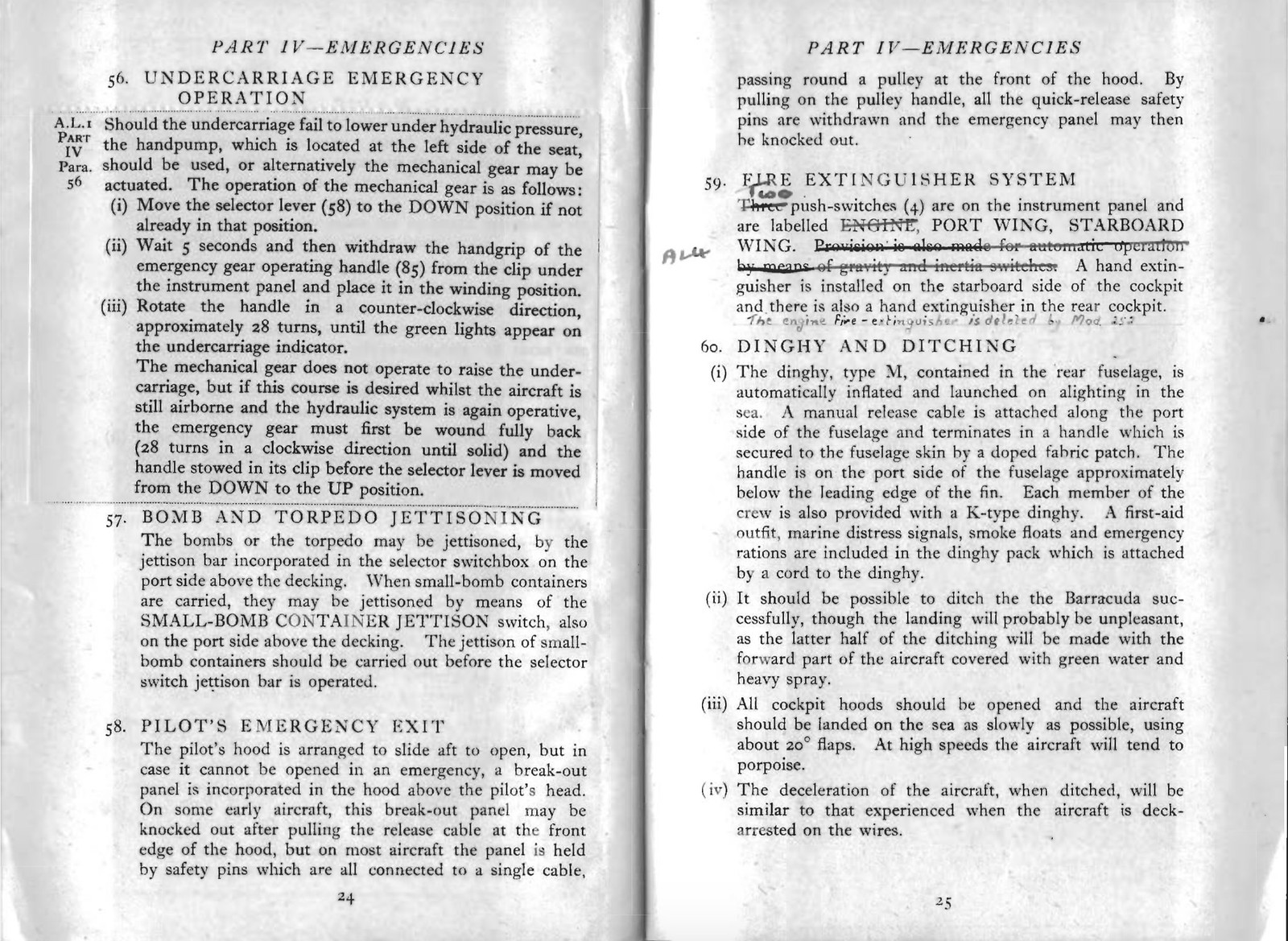 IMG_9303 by tanker622001, on Flickr
IMG_9303 by tanker622001, on Flickr
 IMG_9302 by tanker622001, on Flickr
IMG_9302 by tanker622001, on Flickr
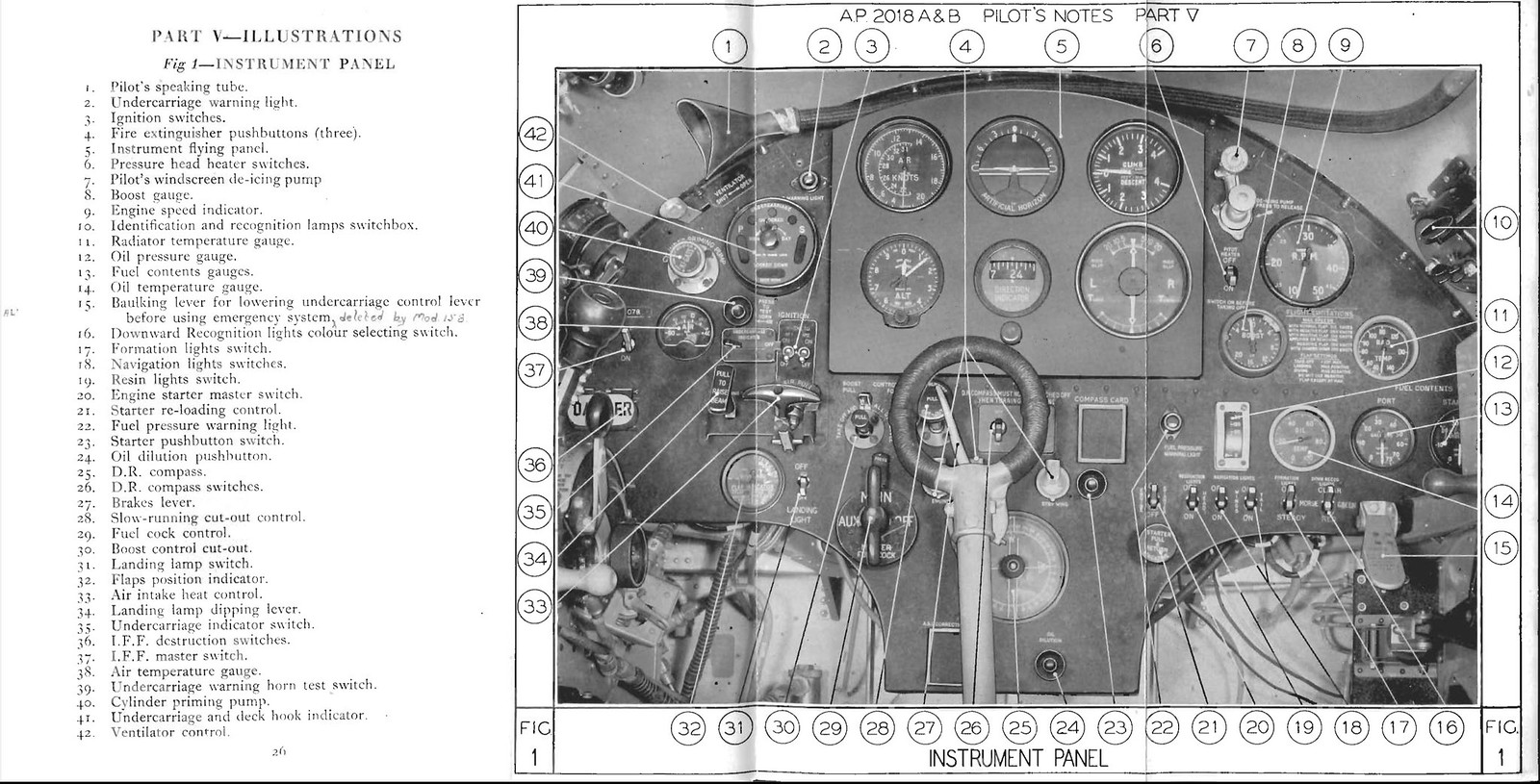 IMG_9304 by tanker622001, on Flickr
IMG_9304 by tanker622001, on Flickr
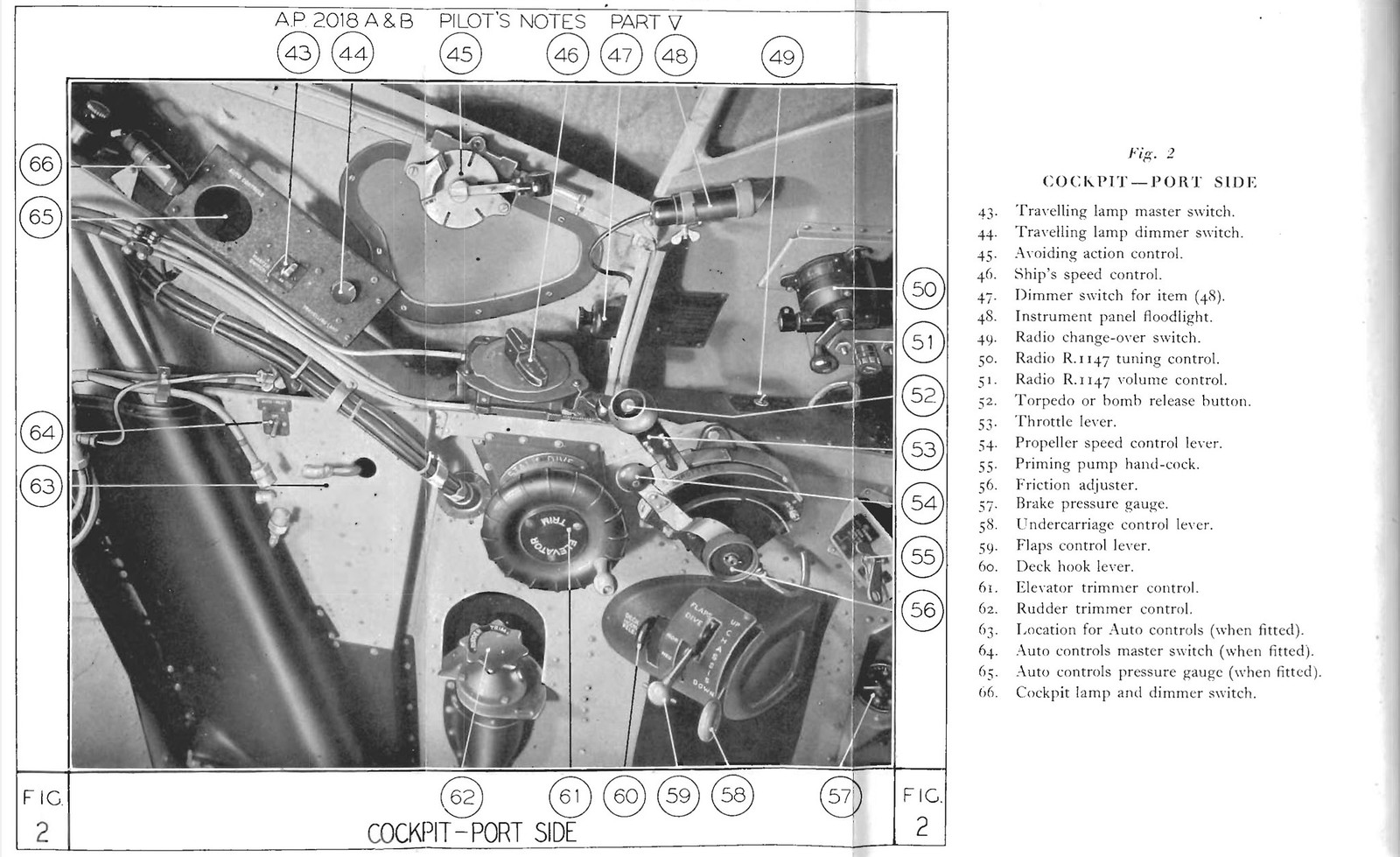 IMG_9305 by tanker622001, on Flickr
IMG_9305 by tanker622001, on Flickr
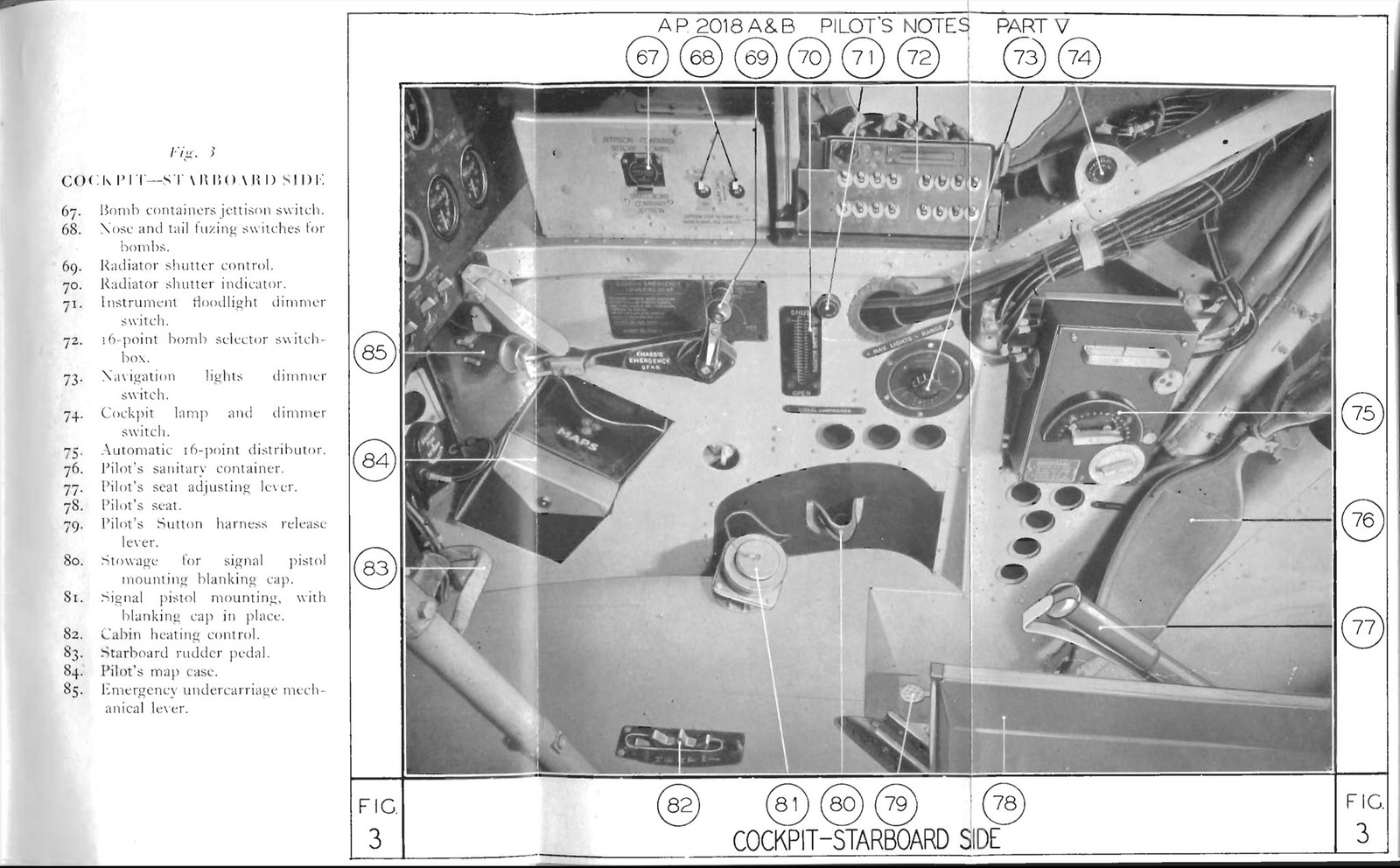 IMG_9306 by tanker622001, on Flickr
IMG_9306 by tanker622001, on Flickr
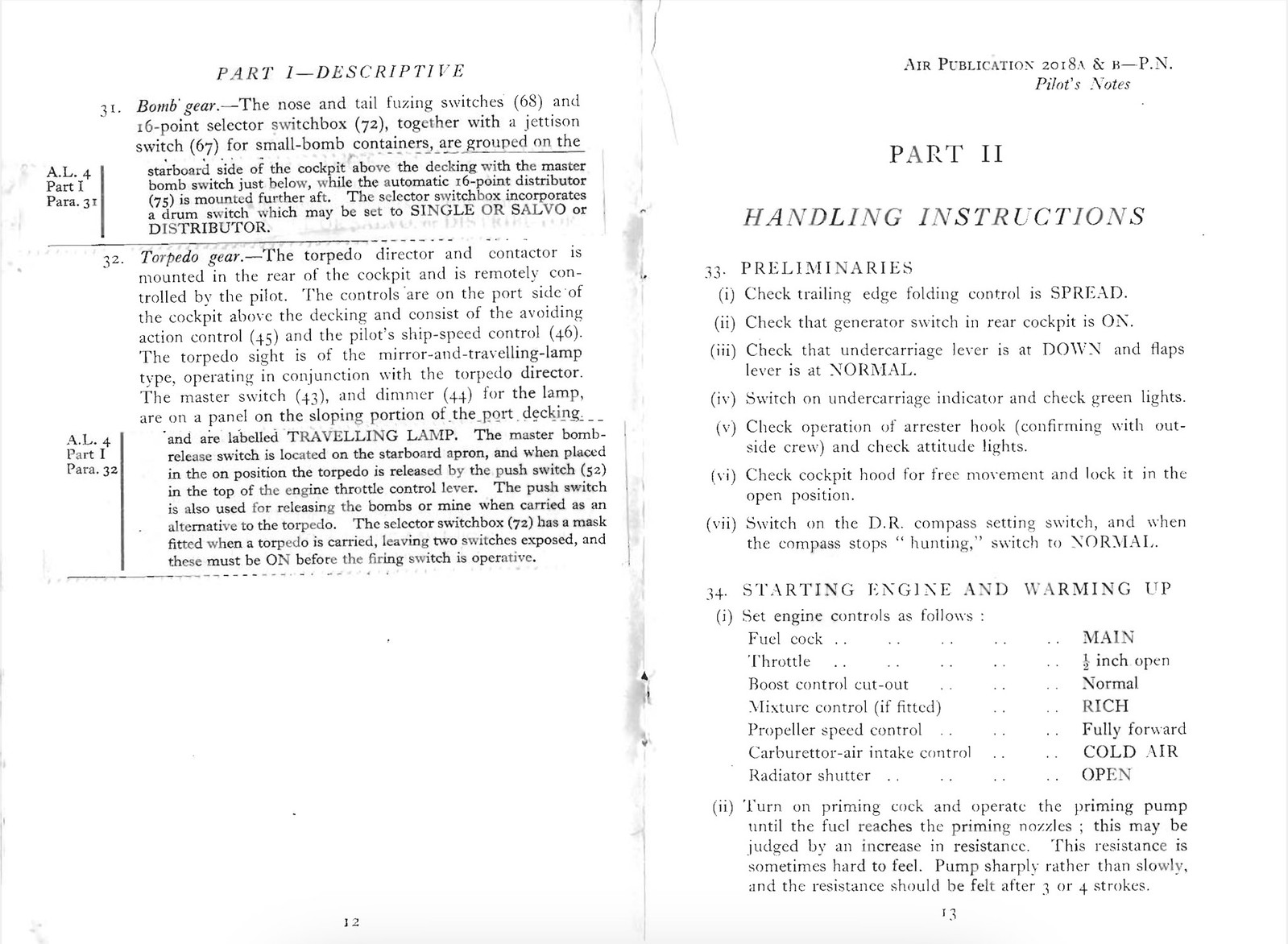 IMG_9309 by tanker622001, on Flickr
IMG_9309 by tanker622001, on Flickr
A few pages from the Barracuda Pilot’s Notes. I think that it’s telling that the Ditching instructions warn that it is possible, but might be unpleasant with green water coming aboard.
Also, in the picture of the left (I suppose that I should say port side) of the cockpit Item 45 “Avoiding Action Control” had me stumped. It apparently had something to do with torpedo guidance It is briefly mentioned on page 12 below.
 IMG_9303 by tanker622001, on Flickr
IMG_9303 by tanker622001, on Flickr IMG_9302 by tanker622001, on Flickr
IMG_9302 by tanker622001, on Flickr IMG_9304 by tanker622001, on Flickr
IMG_9304 by tanker622001, on Flickr IMG_9305 by tanker622001, on Flickr
IMG_9305 by tanker622001, on Flickr IMG_9306 by tanker622001, on Flickr
IMG_9306 by tanker622001, on Flickr IMG_9309 by tanker622001, on Flickr
IMG_9309 by tanker622001, on Flickr
Re: Fairey Barracuda: The troubled torpedo bomber ...
Wed Jul 05, 2023 7:06 pm
I think the English term for this airplane would be "awkward sod".
Wikipedia says that some crashed mysteriously... eventually it was discovered that a panel gauge would leak fluid into the cockpit. The fluid, containing ether, caused the pilot to lose consciousness, with disastrous results. The Air Ministry's solution was to require the pilot to use oxygen, uncommon previously due to the Barracuda generally operating below 10000 feet.
I don't suppose anyone was sorry when the type was retired!
Wikipedia says that some crashed mysteriously... eventually it was discovered that a panel gauge would leak fluid into the cockpit. The fluid, containing ether, caused the pilot to lose consciousness, with disastrous results. The Air Ministry's solution was to require the pilot to use oxygen, uncommon previously due to the Barracuda generally operating below 10000 feet.
I don't suppose anyone was sorry when the type was retired!
Re: Fairey Barracuda: The troubled torpedo bomber ...
Thu Jul 06, 2023 2:47 am
The requirement for pilots to be permanently on Oxygen is not unique to the Barracuda, although the reason was usually Carbon Monoxide from the exhaust not ether from the instruments.